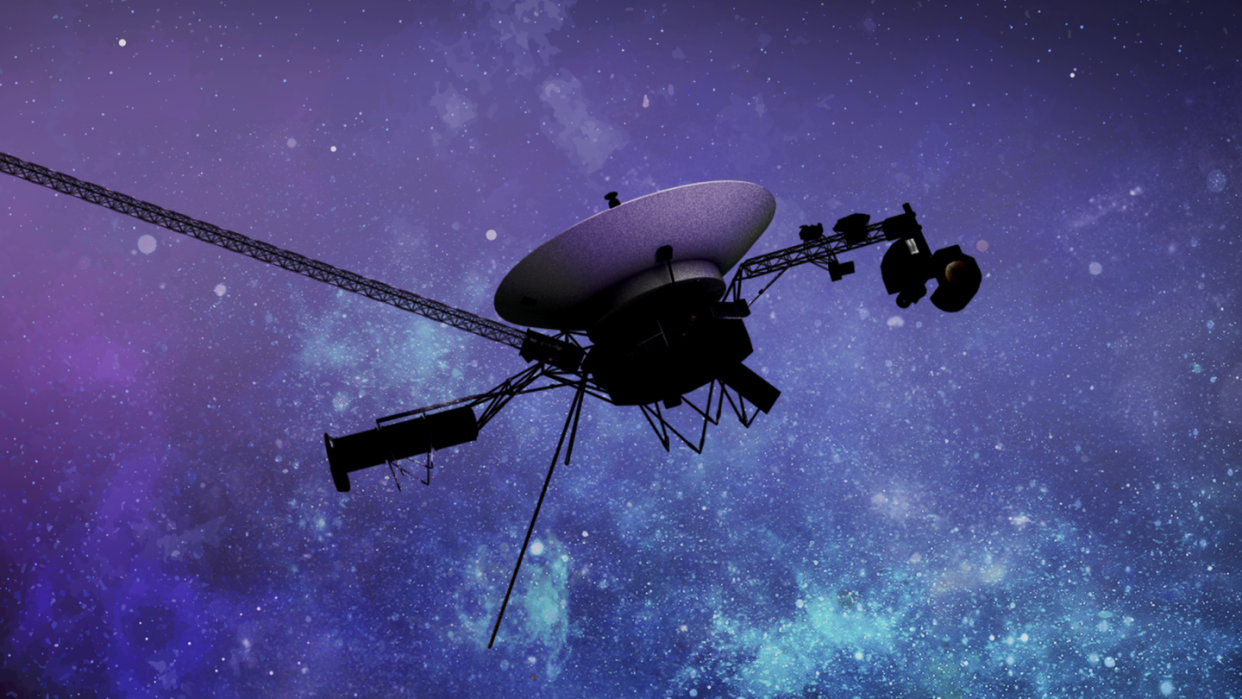Voyager 1 Is Sending Nonsensical Ones and Zeros Back to Earth

"Hearst Magazines and Yahoo may earn commission or revenue on some items through these links."
The first spacecraft to ever leave our heliosphere, Voyager 1 is a legendary spacecraft. Now, after 46 years, it is beginning to show its age.
According to NASA, a glitch in the spacecraft’s Flight Data System (FDS) is causing Voyager 1 to send back a repeating series of ones and zeroes rather than science and engineering data.
The Voyager team is currently working on a fix for the issue, but its 15-billion-mile distance and outdated tech means that a solution is likely weeks in the making—if it arrives at all.
Few NASA missions ignite the imagination like Voyager 1. First launched in September of 1977, the roughly 1,800-pound space probe (carrying one of the famous Golden Records, which contain the sounds of planet Earth) careered toward the outer edges of the Solar System. Surpassing the distance of its sibling Voyager 2 (which actually launched before Voyager 1) in December of that same year, Voyager 1 was the first spacecraft to exit our heliosphere—becoming humanity’s first emissary among the stars.
Some 46 years after that initial launch, the science phase of Voyager 1’s mission may be about to come to an end. Last week, NASA announced that it was working to resolve a computer glitch aboard the spacecraft—part of its Flight Data System (FDS) was causing Voyager 1 to not ‘phone home’ any scientific or engineering data. Commands that take almost an entire day to reach Voyager 1—which is now, at 15 billion miles away, almost 11 times further away from Earth than Earth is from the Sun—combined with decades-old documents mean that a potential fix will likely be weeks in the making.
“Finding solutions to challenges that the Voyager probes encounter often entails consulting original, decades-old documents written by engineers who didn’t anticipate the issues that are arising today,” a NASA press release explained. “As a result, it takes time for the team to understand how a new command will affect the spacecraft’s operations in order to avoid unintended consequences.”
The precise issue affecting Voyager 1 is that the FDS is not communicating with one of the spacecraft’s subsystems, called the telemetry modulation unit (TMU). As the FDS gathers information—whether that be astronomical data or simple health check-ups—the TMU sends a single data package back to Earth. But right now, according to NASA, the TMU is only returning a “repeating pattern of ones and zeroes as if it were stuck.” The Voyager team has already tried restarting the FDS, but the classic “unplug it and plug it back in” didn’t resolve the glitch.
This isn’t the first mishap to showcase the Voyager spacecrafts’ age. This summer, NASA lost contact with Voyager 2 when a human error caused its antenna to tilt away from Earth—not good if you want steady, reliable communication with your far-flung probe. And in 2022, Voyager 1 experienced a glitch in its attitude articulation and control system (AACS) that made it send back similarly garbled telemetry data— a problem for which it took engineers several months to find a work around.
NASA hopes to keep both spacecraft operating with at least one science instrument until 2025, and to be able to send engineering data back to the probes for many more years with Deep Space Network (DSN)—an international array of radio antennas. If all goes according to plan, the DSN could still reach the twin spacecraft well into the mid-2030s.
Voyager 1 and Voyager 2 have far exceeded their original mission parameters, and are currently the oldest operating spacecraft in history—some “senior moments” are to be expected.
You Might Also Like

